Kenneth L. Gentry Jr.'s Blog, page 22
October 13, 2023
THE NEW CREATION IN CHRIST
PMW 2023-080 by Geerhardus Vos

Gentry note:
As noted in my last posting, a new version of several of Geerhardus Vos’ works on eschatology will soon be published. This book collects together some of his important eschatological articles and updates them in the process — removing his awkward, cumbersome, early-20th century writing style. In this particular excerpt from the updated Vos, he deals with the concept of a new creation in Christ.
Vos observations:
The recognition of the eschatological source of the term “new ktisis” has been held back by its assumed individual use in 2 Corinthians 5:17: “Wherefore if any man is in Christ, he is a new creature.” And likewise by the exclusively subjective-soteriological reference the representation seemed to suggest. Both obstacles also make themselves felt in regard to Titus 3:5. But in regard to neither of the two passages can these objections obscure the quite perceptible eschatology texture.
The context clearly shows that Paul in Corinthians means something far more specific than the metaphorical statement about someone’s having been made “a new man” would ordinarily convey. For the one who has undergone this experience of having become “in Christ,” not merely individual subjective conditions have been changed. Rather “the old things are passed away, new things have come into being.” There has been created a totally new environment. Or, more accurately speaking, there has been created a totally new world in which the person spoken of is an inhabitant and participator.
It is not in the first place the interiority of the subject that has undergone the change, although that, of course, is not to be excluded. The whole surrounding world has assumed a new aspect and complexion. That the efficient cause for the thing described lies “in Christ” clearly indicates that such is the fact. Christ nowhere with the Apostle figures merely as a productive center of new individuals: He is everywhere, where the formula in question occurs, the central dominating factor of a new order of affairs. He is in fact nothing less than the originator and representative of a new world-order.
A mere glance at the Pauline (and generally NT) usage of ktisis will further bear out the comprehensive and objective associations of the word (cp. Rom. 8:19–20; Col. 1:15; Heb. 9:11; Rev. 3:14). Nor does the context permit any restriction to the renovated inner nature of the Christian subjectively considered. The whole argument of the passage revolves around the substitution of one objective status and environment for another. It belongs to the chapter on “justification” equally much as to that on inward renewal. 2 Corinthians 5:18 speaks of “all things” as “being of God,” which again is not naturally understood of the subjective internal condition of the believer alone. Also the term katallassesthai (“to reconcile”) points to the objective sphere. And in its Greek import, as distinct from the English Bible rendering, is quite flexible and broad enough to allow of this widening out of the concept to the idea of a “change” affecting the whole world.
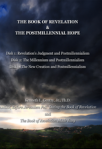
The Book of Revelation and Postmillennialism (Lectures by Ken Gentry)
In the first of these three 50-minute lectures Gentry explains Revelation’s judgments to show they do not contradict postmillennialism. In the next two lectures he shows how the Millennium and the New Creation themes strongly support the gospel victory hope found in postmillennialism.
See more study materials at: www.KennethGentry.com
In view of all this there is ample reason for favoring the rendering “a new creation.” And this, when once substituted, directly points to the eschatological antecedents of the idea and opens up the perspective of its other-worldly far-reaching significance. Hence the Apostle speaks in 2 Corinthians 5:18 of all things, indicating that not a single point but a comprehensive range of renewal stands before his mind. The whole antithesis spoken of is for him determined by the complexion of the Christ who stands in the center of it. To know of, that is to reckon with, a Christ kata sarka (“according to [the] flesh”) means one constitution of things. To reckon with a differently complexioned Christ, kata pneuma (“according to [the] Spirit”), though not explicitly named, means a different, an opposite constitution of things. And in this case can only be the eschatological one. How the reference to justification, lying on the surface of the argument, can fit into this eschatologically-colored interpretation will appear presently.
Not so strongly reminiscent of eschatological origins is the phrase kaine ktisis in the second instance of its occurrence: “For neither is circumcision anything nor uncircumcision, but a new creation” (Gal. 6:16). Still even here the thought of the new final order of affairs with new values of enduring equalizing character is by no means absent.
On the negative side it clearly finds expression in the immediately preceding avowal: “Far be it from me to glory, save in the cross of our Lord Jesus Christ, through whom (or which) the world has been crucified unto me and I unto the world.” The cross is here represented as effecting an absolute separation between two worlds. And this cuts loose the Apostle from the world to which he at first belonged, and having transplanted him into another. This separation was so radical that the two parts between whom it took place were afterwards equally unable to have community of interests one with the other. For the world was no less crucified to Paul than Paul was to the world.

Four Views on the Book of Revelation (ed. by Marvin Pate)
Helpful presentation of four approaches to Revelation. Ken Gentry writes the chapter on the preterist approach to Revelation, which provides a 50 page survey of Revelation .
See more study materials at: www.KennethGentry.com
At first it naturally seems difficult to fit in this conception of the effect of the cross with the usual modes of teaching developed concerning the same in other contexts of the Epistles. The difficulty disappears if we call to mind the Christologico-eschatological background of the statement. It is first of all with reference to Christ and the kosmos that such a sharp divorce has taken place through the cross. The cross, that is to say his death under the peculiar circumstances in which it took place, cut through the bond which for a definite period of time had tied Him to the kosmos. It threw Him out from the world, and He departed from it to enter another world, which was his real home.
It needs no pointing out that in Christ’s case this exchange of one world for another possessed before anything else eschatological features and proportions. It made Him not so much a “new creature,” as the veritable beginner of a “new creation.” Now, in conscious assimilation of his own experience to this train of thought, the Apostle affirms of himself that he is crucified to the world, as the world is to him. And further that henceforth in his new sphere of existence, a new creation is the decisive, all-important factor. Thus, it will hardly do justice to Paul’s intent to confine it to the idea of endowment with a new and higher nature or personality. The conception is too weighty for that.
The fundamental underlying idea must be that of an incorporation into a new system of reality, a fact which renders it in principle eschatological. How the Apostle would have expressed himself without conscious side-reference to the objective eschatological situation can be seen from Galatians 5:6: “For in Christ Jesus neither circumcision avails anything nor uncircumcision, but faith working through love.” Here, it will be observed, where the thought is subjectively turned, the opposite to circumcision and uncircumcision is not “a new creation,” but “faith working through love.”
It is not different with the term palingenesia occurring in Titus 3:5: “not by works of righteousness which we have done, but according to his mercy he saved us, by the washing of regeneration, and renewing of the Holy Spirit.” To be sure, here the indigenous soteriological meaning seems to be strongly attested through the combination with loutron, “the washing” of palingenesia (“regeneration”) and of anakainsis (“renewing”), which are both “of the Holy Spirit.” Baptism to our consciousness certainly is something pertaining to the present Christian state. Nevertheless, the very fact of its being joined to palingenesia proves that it must have in its conception a definite bearing on the future life. Within the New Testament this is indicated by 1 Peter 3:21, where the world-overwhelming flood appears as its type, has ascribed to it a power saving from the antitypical judgment: “The like figure whereunto even baptism doth also now save us (not the putting away of the filth of the flesh, but the answer of a good conscience toward God) by the resurrection of Jesus Christ.”
In extra-biblical sources already the eschatological meaning appears in evidence. And it is not as a derived metaphorical usage. On the contrary, the philosophico-mythological is the prior meaning, and an occasional figurative use is felt as having been derived from that. Of individual eschatology it is used in connection with the Dionysiac myth in referring to which Plutarch speaks of the apobiseis (“death”) and the pallingenesthai (“rebirth”). In the Pythagorean doctrine of the transmigration of souls the term was used technically as the opposite of the prote genesis (“first birth”) or nun genesis (“now birth”). With Philo it signifies the life after death, individually conceived, but also is applied to the future world collectively. Subsequently, however, the metaphorical meaning developed, even in Philo. Cicero calls his return from banishment his palingenesia. Eschatological likewise is the single occurrence in the Septuagint of Job 14:14, which reads: “All the days of my warfare would I wait es palin genmai [‘until I exist again’].”

The Harrowing of Hell (by Jay Rogers)
This postmillennial book examines the power of the Gospel, not only to overcome all opposition, but to rise far above the powers of hell. The term “Harrowing of Hell” refers to idea that Christ descended into Hell, as stated in the Apostles’ Creed.
For more Christian educational materials: www.KennethGentry.com
Besides by pagan authorities, the eschatological sense is attested by the saying of our Lord in the New Testament itself. For in Matthew 19:28 he says: “Ye who have followed me shall in the regeneration, when the Son-of-Man shall sit on the throne of his glory, also sit upon twelve thrones, judging the twelve tribes of Israel.” In this saying the word cannot be restricted to the more or less individualizing application of the resurrection. It covers the resurrection as a whole and even the renewal of the universe. For this is shown from the parallels in Mark and Luke, which have as its equivalent descriptions of the final state (Mark 10:29–30; Luke 22:29–30). Thus also Josephus understands the term, making it interchangeable with apokatastasis (“restoration”).
Under these circumstances the eschatological reference in connection with baptism in Titus 3:5 can create no surprise. It made itself so naturally felt that Origen on Matthew 19:28 declares baptism to be the prooimion (“prelude”) to that palingenesia (i.e., the great palingenesia of the resurrection). Even Clement of Rome still says that Noah preached a palingenesia to the kosmos. The familiar soteriological sense appears first with Clement of Alexandria.
October 10, 2023
TWO PROBLEMS WITH AION TERMINOLOGY

PMW 2023-079 by Geerhardus Vos
Gentry note:
Soon a new version of several of Geerhardus Vos’ works on eschatology will be published. This book collects together some of his important eschatological articles and updates them in the process — removing his awkward, cumbersome, early-20th century writing style. In this clip from updated Vos, we will note his helpful observations on the Greek words kosmos and aion. These words overlap in meaning and significance, making it easy to confuse matters when interpreting biblical texts. I hope this posting is helpful.
Geerhardus Vos observations
There are two problems connected with the aion and kosmos terminology, since they are to some extent interdependent. The first problem concerns the antiquity and origin of the contrast in general; the second concerns the relation of aion to kosmos.
The Johannine writings do not employ “this aion” or “the coming aion” for the purpose of eschatological contrast. Wherever aion occurs in them either in the purely-temporal or in the eternity-sense, the associations are thoroughly favorable; the pronoun “this” is not prefixed to it. The standing phrase is eis ton aiona, “until eternity.” This receives sufficient explanation from the older Scriptural time-use of ‘olam (“age”) and the plural ‘olamim (“ages”). On the other hand, for the evil member of the antithesis the word kosmos, ho kosmos houtos (“this world”) finds characteristic employment with John (cp. John 12:31;14:30; 16:11 [ho archon tou kosmou toutou, “the ruler of this world”] with “the god of this aeon” [2 Cor 4:4]).
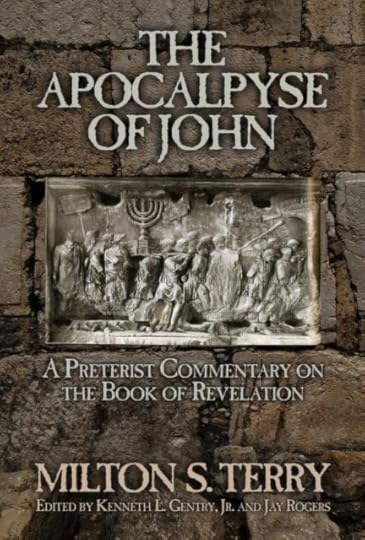
THE APOCALYPSE OF JOHN
by Milton S. Terry
This book is Terry’s preterist commentary on the Book of Revelation. It was originally the last half of his much larger work, Biblical Apocalyptics. It is deeply-exegetical, tightly-argued, and clearly-presented.
For more study materials: https://www.kennethgentry.com/
Now this word kosmos with Paul also occasionally occurs synonymously with ho aion houtos (“this age”). So we find it in Romans 3:6; 1 Corinthians 1:20–21; 2:12; 3:19; 11:32; 2 Corinthians 7:10; and Philippians 2:15. That the word kosmos had evil coloring when used in ethico-religious connections appears most clearly from the fact of its never being transferred to the state to come. Thus, ho kosmos ekeinos (“that age”) is neither Johannine nor Pauline. Jesus in his speech to the Jews shows conscious avoidance of it in John 8:23: “Ye are of this world; I am not of this world,” instead of “I am of that world.” This does not, of course, prevent either John or Paul the ethically-neutral use of “world” as a comprehensive quantitative designation of the lower creation. For Paul, see Romans 1:8; 5:12; 1 Corinthians 4:9 (7:31); 14:10; Ephesians 1:4; Col. 1:6; and 1 Timothy 6:7. For John, see John 1:9–10; 3:19; 6:14; 8:26; 9:5; 10:36; 11:27; 13:1; 16:21; 17:5, 24; 18:37; 21:25; 1 John 2:2; 4:1, 3, 9; and 2 John 7.
The usage of both terms in Paul leaves the impression that the antithesis is not of the Apostle’s own coining. He may have accentuated the evil aspect of “the present age” more than was done previously. But he certainly did not frame as altogether new either the phrase itself nor its close association with ho kosmos. In the Jewish writing 4 Ezra, scarcely a generation later than Paul, it is said “that God made two aions” (7:50). Further, the present age and the future age are contrasted in a number of passages. The same appears in the Apocalypse of Baruch (of approximately the same period). God revealed to Abraham “this aion” but not “the coming aion.” To these may be joined, as a Jewish witness for the way of speaking, Eleazar from Modiim (somewhat later than Jochanan). He enumerates among the six good gifts bestowed upon Israel the coming aion and the new world.

As It Is Written: The Genesis Account Literal or Literary?
Book by Ken Gentry
Presents the exegetical evidence for Six-day Creation and against the Framework Hypothesis. Strong presentation and rebuttal to the Framework Hypothesis, while demonstrating and defending the Six-day Creation interpretation.
See more study materials at: www.KennethGentry.com
These Jewish authorities would certainly not have borrowed a phrase of this kind from Paul nor from the vocabulary of Christian eschatology in general. So that, even if earlier indubitable instances of occurrence could not be quoted, the ones just mentioned will suffice to prove the Pauline usage a derived one. Dalman, who is on the whole disinclined to carry the phrases farther back than is absolutely necessary, here also has critical suspicions. Yet he is compelled to admit: “the existence of the phrases ‘this aion,’ ‘the future aion’ is at any rate established for the close of the first post-Christian century.”
October 6, 2023
THE WOMAN IN HEAVEN (3)
PMW 2023-078 by Kenneth L. Gentry, Jr.
This is the third and final installment studying the woman in Revelation 12. So, let us now continue and conclude our study.
THE CROWN OF TWELVE STARS
The “crown of twelve stars” (12:1c) is a stephanos, a victor’s wreath (cp. 2:10; cf. 6:2; cp. 1Pe 5:4), rather than a diadēma, a crown representing political rule (L-N 1:76, 77). Ideal Israel embodied in the faithful remnant is deemed victorious, despite her diminished count and difficult circumstances. Unfortunately, the historical manifestation of the ideal community — Israel after the flesh — ultimately fails in that she does not recognize the true light that she should have accepted (Jn 1:4–5, 9–11; 3:19–20; 5:33–40). As a result we learn that “it is not the children of the flesh who are children of God, but the children of the promise are regarded as descendants” (Ro 9:8; cp. Ro 8:14; Gal 4:28). Consequently, earthly, corporate Israel’s failed light-bearing function is taken over by the new covenant church (Mt 5:14–16 //; Ac 13:46–47; 26:18, 23; 2Co 4:6; cp. Col 1:12; 1Th 5:5) which is the “Israel of God” (Gal 6:16), the “true circumcision” (Php 3:3). Therefore, in Revelation God’s judgments against earthly Israel darken her lights (8:12; cp. 6:12; 9:2) and cause her shining stars to fall (6:13).
Revelation presents the woman as “with child,” or literally “in womb” (en gastri, 12:2), an idiom for pregnancy (Mt 1:18, 23; 24:19; Lk 1:31; 1Th 5:3). While in this condition she “cries out, being in labor and in pain to give birth” (12:2). On the surface this appears to picture Israel’s readiness to give birth to Christ through Abraham’s seed-line by looking back to his nativity. Jesus certainly comes through Israel (Mt 1:1; 2:2), and this is surely a reasonable interpretation of the language here. Consequently, many scholars hold that this is John’s point (Swete 148; Mounce 232; Beale 629; Kistemaker 355; OBC 1296; Witherington 168; Boxall 178; Resseguie 171). In fact, Beale (631) declares that “most commentators” do so. I believe, however, that the context suggests otherwise. As I will argue more fully below (in both my second point, and later at 12:5), the “birth” mentioned here at 12:1 (and 12:5) actually speaks of Jesus’ resurrection from the tomb, rather than his birth from the womb. We may discern this from the following.
 Understanding the Creation Account
Understanding the Creation Account
DVD set by Ken Gentry
Formal conference lectures presenting important information for properly approaching the Creation Account in Genesis. Presents and defends Six-day Creation exegesis, while presenting and rebutting the Framework Hypothesis.
See more study materials at: www.KennethGentry.com
THE MEANING OF THE BIRTH
First, the verb translated “in pain” is basanizomenē which speaks of a very intense pain that is never used for the pain of actual childbirth in Scripture or elsewhere (Beale 629; Osborne 456). In Revelation it is normally translated “torment” (9:5; 14:10; 20:10), as is its noun form, basanismos from basanos (9:5; 14:11; 18:7, 10, 15). This leads Prigent (384) to ask: “why are the woman’s sufferings indicated by a verb that does not commonly have this meaning” (i.e., of birth)? Not only does this word speak of an intense pain, but this verse is “quite wordy, emphasizing the woman’s intense suffering” (Bratcher 182): “she cried out, being in labor and in pain” (12:2). That being so, our text presents us with a double reality regarding the woman’s suffering: (1) This pictures ideal Israel who bears the Messiah into the world after long enduring suffering and tribulation, all while awaiting her Redeemer. The Messianic line and hope is maintained by the remnant despite persecution and trials (e.g., Ps 74; 79; 80; 89:38–51; 94; Isa 26; 51).
Note especially the persecution of the righteous outlined in Heb 11 (Heb 11:13, 23–27) — often even from within Israel herself (Heb 11:32–38). Thus, “the corporate figure of the woman in verse 1, then, becomes in verse 2 the true Israel in a ‘pre-messianic agony of expectancy’” (Smalley 316).
But we must also recognize another element in this imagery: (2) This long-standing suffering comes to imminent expression in the experience of Jesus’ disciples. They are the current embodiment of the remnant of Israel, the woman who is crying out in pain. Thus v 2 speaks of their intense fear and deep anguish as they endure persecution from apostate Judaism (the religion of Israel after the flesh) which puts Christ to death. During his ministry Jesus warns them that they will be persecuted, just as he is (Jn 15:20; cp. Mt 10:16–23). At the time of his trial and crucifixion, therefore, they fearfully forsake (Mt 26:56) and deny him (Mk 16:66–72) and will afterwards hide in “fear of the Jews” (Jn 20:19). Not only so, but his death (Jn 16:17–19) will cause them to “weep [klausete] and lament [thrēnēsete]” and “grieve [lupēthēsesthe]” (Jn 16:20), which Jesus likens to a woman bearing a child (16:21–22). Thus, the Jn 16 reference provides “a close similarity” to Revelation 12:2 (Boxall 178; cp. Smalley 316) and allows the disciples to “represent the mother, the messianic community” (Beale 630) who grieve over Christ’s death but will rejoice at his resurrection.
Understanding the Olivet Discourse 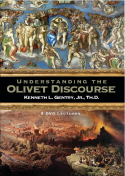
By Ken Gentry
This 5 DVD lecture set was filmed at a Bible Conference in Florida. It explains the entire Olivet Discourse in Matt. 24–25 from the (orthodox) preterist perspective. This lecture series begins by carefully analyzing Matt. 24:3, which establishes the two-part structure of the Discourse. It shows that the first section of the Discourse (Matt. 24:4–35) deals with the coming destruction of the temple and Jerusalem in AD 70. This important prophetic event is also theologically linked to the Final Judgment at the end of history, toward which AD 70 is a distant pointer.
For more educational materials: www. KennethGentry.com
Second, John apparently has Ps 2 in mind, for he alludes to it in 11:15, 18, almost immediately before our text; he will again in 12:5 shortly after it. This Messianic Psalm has God declaring “today I have begotten You” (Ps 2:7) as it speaks of his enthronement (Ps 2:8–9). Christ’s enthronement occurs at his death and resurrection, not at his delivery and birth (see discussion at 12:5). Third, Satan is apparently behind Herod’s slaying of the children in an attempt to kill Jesus (Mt 2:16). Nevertheless, that episode, does not fit our text here, where Satan awaits the birth so that “whenever she bears the child [hotan tekē to teknon autēs]” he might immediately “devour” it. Note: (1) The Gospel record does not mention Satan’s involvement in this evil action. In the NT record Satan does not appear on the scene until after Jesus’ baptism at age 30 (Mt 4:1) (2) Herod’s assault on Christ occurs well after Jesus’ birth. When the Magi visit Jesus he is not an “infant” (brephos, Lk 2:16) but a “child” (paidion, Mt 2:9, 11, 13) and he is in a “house” (oikian, Mt 2:11), not a manger (phatnē, Lk 2:7). And Herod orders the slaying of children “two years old and under” (2:16).
October 3, 2023
THE WOMAN IN HEAVEN (2)
PMW 2023-077 by Kenneth L. Gentry, Jr.
This my second study looking into the woman in Revelation 12. Please read the previous posting for context. But now, let us return to the study.
THE WOMAN AS PREGNANT
Before we can specifically identify this glorious woman and explain the significance of her clothing, we must consider the further important descriptive information found in the next verse: she was with child; and she cried out, being in labor and in pain to give birth (12:2). Many scholars note that here we discover another OT backdrop from which John primarily draws for both 12:2 and 5, that is, Isa 66:7–8 (e.g., Russell 450; Kiddle 222; Caird 149; Ford 189; Aune 682; M. Wilson 318; Witherington 167; Osborne 458). In that Isaianic reference we find the pregnant-mother and birth-son symbolism: “Before she travailed, she brought forth; / Before her pain came, she gave birth to a boy. / Who has heard such a thing? Who has seen such things? / Can a land be born in one day? / Can a nation be brought forth all at once? / As soon as Zion travailed, she also brought forth her sons. / ‘Shall I bring to the point of birth and not give delivery?’ says the LORD. / ‘Or shall I who gives delivery shut the womb?’ says your God.” Other texts present Israel as a woman enduring birth pains: Isa 21:3; 26:17–18; 37:3; Jer 4:31; 6:24; 13:21; 22:23; 30:6; Mic 4:9.
But who is this glorious woman here in Revelation? The matter has been long and vigorously debated. A view widespread in Roman Catholic exegesis (and first suggested by Oecumenius) holds that this pictures Mary, the mother of Jesus (e.g., Feuillet 257–58). We may quickly dismiss this interpretation for: (1) The text speaks of “the rest of her children [lit. “seed,” spermatos]” in 12:17, referring there to persecuted saints. The woman is obviously a corporate image producing many children. (2) The larger passage (including 12:4–5) clearly reflects Isa 66:6–9 which refers to Zion (see argument below). This suggests that corporate Israel rather than an individual (Mary) is in view. (3) Mary has too modest a role in Scripture for such a dramatic picture. She is barely mentioned after the Gospel record: in Acts she appears once (Ac 1:14); no one mentions her elsewhere in the NT.
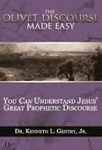
Olivet Discourse Made Easy (by Ken Gentry)
Verse-by-verse analysis of Christ’s teaching on Jerusalem’s destruction in Matt 24. Shows the great tribulation is past, having occurred in AD 70, and is distinct from the Second Advent at the end of history.
See more study materials at: www.KennethGentry.com
Many commentators argue that she represents the whole church, “the community of faith in both the Old and New Testament ages” (Beale 631; cp. Stuart 2:252; Giblin 126; Boring 158; Beale 625; Boxall 178; Lupieri 189; Witherington 167, 169; Brighton 319, 327). Yet another, more narrow view is preferable: she is “Israel, the chosen people of God” (Morris 189; cp. Bleek 263, 266; Kiddle 210; Carrington 208; Morris 189; Metzger 74; Keener 313, 314, 324; D. Johnson 180; Mayo 153; Lupieri 189). More specifically, this woman pictures Israel in her ideal form, Israel as God intends her to be.
Four reasons push us away from the universal-church view and toward the more narrow ideal-Israel view.
FOUR ARGUMENTS AGAINST IDEAL-ISRAEL
First, John’s sources suggest Israel herself is in view. As noted above, in his reference to the “twelve stars” he alludes to Ge 37:9 which pictures the eleven sons of Jacob bowing before the twelfth son (Joseph). This dream clearly deals with historical Israel (Ge 37:10–11). Another source coloring John’s vision is Isa 66:7–8. This powerful prophecy speaks of Zion (Israel) and is particularly close to Rev’s portrayal of the woman and her situation (12:2, 4–5). Isaiah’s passage actually prophesies the birth of the new covenant church from out of Israel, for as Young (1965: 524) explains: “the old order passes away, the ancient nation will perish and the Zion of Old Testament times disappear; but from the old Zion there will suddenly come forth a seed, the Gentiles who will enter the household of faith” (cp. Alexander 1875: 565–66; K-D 7: 630; NBC 607).
Second, John’s whole style strongly suggests that this pictures old covenant Israel ideally conceived, for Rev is extremely Judaic in style and tone and OT-oriented in source and content (see my Introduction). Given John’s Hebraic cast he could easily be picking up on this OT image of Israel.
Third, elsewhere John shows a deep interest in ideal Israel. In 7:4–8 he pictures the sealing (the protecting and preserving) of the remnant of Israel which appears there as twelve thousand from each of the twelve tribes. The remnant of Israel also appears in 11:1–2, where the inner temple pictures the core of Israel (Jewish Christians) while the rest of Israel becomes the cast-out outer court (non-Christian Jews). There, however, he does not expressly mention the twelve tribes. We also see his interest in Israel in 21:12, where the gates of the new Jerusalem have the names of the twelve tribes of Israel on them. He distinguishes them from the foundation stones which have the names of the twelve apostles on them (21:14).
Fourth, John’s own picture forces us to distinguish the woman from her child. As a “woman” (12:1) she is not the same as her “son, a male child” (12:5). John even uses words that strongly contrast the sex of the woman (gunē) with her son, providing a double emphasis on his being a male son (huion arsen; 12:5). This term “probably stresses the ‘manliness’ of the son” (Ford 200), for it has “a strong emphasis on the sex” (BAGD 135). Nor should she we identify the woman with her other offspring in 12:17, who represent the persecuted (first-century) church elsewhere in the Roman empire beyond Israel. Thus, as presented in 12:2, 4–5, she does not picture the universal Christian church, the whole people of God. Rather she pictures the mother of the Christian church, ideal Israel.
[image error]For more information and to order click here.
" data-image-caption="" data-medium-file="https://postmillennialismtoday.files...." data-large-file="https://postmillennialismtoday.files...." class="alignright size-full wp-image-211" src="https://postmillennialismtoday.files...." alt="" />Perilous Times: A Study in Eschatological Evil (by Ken Gentry)
Technical studies on Daniel’s Seventy Weeks, the great tribulation, Paul’s Man of Sin, and John’s Revelation.
See more study materials at: www.KennethGentry.com
Keener (313) perceptively suggests that the woman is the “antecedent of the faithful bride of Christ, the new Jerusalem.” She does seem to reflect the new Jerusalem in 21:10–11, for there John associates the new Jerusalem with light, including the sun and moon (as in 12:1) and she has “the glory of God” and “her brilliance was like a very costly stone” (21:10–11). Indeed, we learn that the new Jerusalem “has no need of the sun or of the moon to shine on it, for the glory of God has illumined it,” “the nations will walk by its light,” and “there will be no night there” (21:23–25). As the antecedent of the new Jerusalem this woman is her forerunner and anticipates her. Again, she is ideal Israel, the mother of Christianity. Carrington (208) argues that John presents the glory of the ideal Israel in ch 12 immediately after speaking of the judgment of the corrupted Israel in ch 11: “God’s people have failed him and are rejected; but there has always been an inner circle, a faithful remnant of visionaries and idealists, who remain true to him”
By viewing this “woman” as “in heaven” (12:1a) John is further underscoring her ideal form: notice her glory as the sun, moon, and stars (12:1). Milligan (210) puts it well: she is here “set before us in her ideal aspect, in what she is in herself, rather that in her historical position.” This is much like the NT speaking of the new covenant phase of the church as located in heaven (Jn 17:16; Eph 1:3; 2:6; Php 3:20; Col 3:1–3). And this heavenly new covenant church flows out of the remnant of Israel which also is heavenly. This ideal conception of Israel is much like the ideal conception of the tabernacle/temple system itself, for it is understood as ultimately from heaven (Heb 8:5; 9:11, 23–24; cp. Ex 25:9, 40; 26:30; 27:8; Ac 7:44).
Though the heavenly bodies describing the woman derive immediately from Joseph’s dream in Ge 37:9, they ultimately reflect the creation of the sun, moon and stars (and in the same order) in Ge 1:14–16 (cp. Ps 74:16; 136:7-9; Jer 31:35; cf. Eze 32:7; Zec 14:6). There God creates these luminaries to give light to the world. Thus, in John’s vision the woman is “arrayed in light from head to foot” (Milligan 1903: 198), i.e., from her head where appears “a crown of twelve stars” to “under her feet” where we see the moon (12:1). This image well suits ideal Israel, for in the OT God appoints Israel “as a covenant to the people, / As a light to the nations” (Isa 42:6; cp. 49:6; 51:4; 60:1–3).
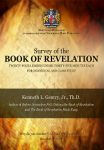
Survey of the Book of Revelation
(DVDs by Ken Gentry)
Twenty-four careful, down-to-earth lectures provide a basic introduction to and survey of the entire Book of Revelation. Professionally produced lectures of 30-35 minutes length.
See more study materials at: www.KennethGentry.com
September 29, 2023
THE WOMAN IN HEAVEN (1)
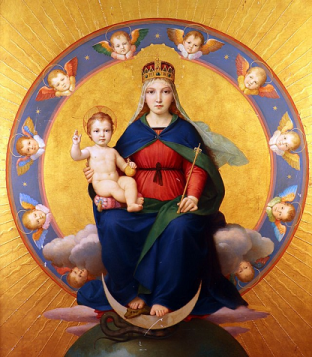 PMW 2023-076 by Kenneth L. Gentry, Jr.
PMW 2023-076 by Kenneth L. Gentry, Jr.
In Revelation 12 we see John’s vision of a pregnant woman in heaven. His introductory text reads:
“A great sign appeared in heaven: a woman clothed with the sun, and the moon under her feet, and on her head a crown of twelve stars; and she was with child; and she cried out, being in labor and in pain to give birth.” (Rev. 12:1–2).
Our first task in interpreting this vision and that which follows is to determine the identity of the woman.
A GREAT SIGN APPEARED IN HEAVEN
This is the first time that we find the word sēmeion (“sign”) in Rev. Beginning here it appears seven times in the book, three times in the singular (12:1, 3; 15:1) and four in the plural (13:13, 14; 16:14; 19:20). A sign is something quite remarkable and extraordinary that captures one’s attention, and is oftentimes a miracle. John uses “sign” frequently in his Gospel (e.g., Jn 2:11, 18, 23; 4:48; 6:2, 14; 7:31). Robertson (387) explains that “this ‘sign’ is really a teras (wonder), as it is so by association” in Mt 24:24; Jn 4:48; Ac 2:22; 5:12. He adds that “the element of wonder is not in the word sēmeion as in teras, but often in the thing itself,” as in Lk 21:11; Jn 9:16; Rev 13:13ff; 15:1; 16:14; 19:20. John especially emphasizes this sign by the adj. megas (“great”).
Before Jerusalem Fell (Kindle version) (by Ken Gentry)
Doctoral dissertation defending a pre-AD 70 date for Revelation’s writing. Thoroughly covers internal evidence from Revelation, external evidence from history, and objections to the early date by scholars.
See more study materials at: www.KennethGentry.com
In addition, the word “appeared” is ōphthē, an aor. pass., which occurs only three times in Rev (11:19; 12:1, 3). This is an unusual way to introduce a vision: for previously John introduced his visions with phrases such as meta tauto (4:1; 7:1, 9; etc.) or eidon (5:1, 2, 6; 6:1; 7:1, 2; etc.). This aor. pass. verb draws special attention to the sign which will be very important for John’s storyline. The sign is actually a woman (12:1b); in v 3 another sign will present “a great red dragon.” Thus, “the woman and her adversary, the dragon, are ‘signs’ that alert the reader to the key conflict of the book” (Osborne 456). We should note that the woman-sign itself is “great,” but the dragon-sign is simply “another sign” (12:3a), despite the fact the he himself is “a great red dragon” (12:3b). Despite how downtrodden the woman may seem on earth, from heaven’s perspective she is great and glorious (see discussion of the woman below).
THE WOMAN IN HEAVEN
John states that the sign (i.e., the woman herself) is “in heaven” (en tō ouranō), which some scholars believe refers to the sky due to 12:1 and 4 involving the sun, moon, and stars (Stuart 2:252; Kiddle 219; Swete 147; Carrington 204; Morris 152; Mounce 231; Boxall 178). Nevertheless, this probably refers to God’s heavenly abode (Bleek 263; Terry 382; Witherington 167; Michaels 148; Beale 625; Smalley 314; Brighton 332). The “immediately preceding verse leaves our attention in “heaven” where God’s temple is located (11:19). Afterwards several references to “heaven” in this chapter virtually demand that God’s heaven is in view: (1) Michael and his angels are present there (12:7). (2) Satan is cast down from there so that he can no longer accuse the saints before God (12:8–9), whose throne is in heaven (4:2). We should recall Satan’s work of entering the presence of God in heaven in order to accuse Job before God (Job 1:6–12; 2:1–7). (3) A loud voice speaks from heaven regarding God and Christ (12:10). Frequently in Rev John provides the heavenly view of earthly events, for he himself is caught up into heaven to gain this perspective (4:1–2). He seems here to be presenting this “woman” from a heavenly perspective.
The sign-object that appears to John is: “a woman” who is clothed with the sun, and the moon under her feet, and on her head a crown of twelve stars (12:1b). Brighton (327) well notes that “with the exception of Jesus Christ, no human figure in the entire Bible is so clothed and glorified.” Milligan (198) points out that “sun, and moon, and stars exhaust the Biblical notion of the heavenly bodies which give light upon the earth.” In fact, they are set in the heavens by God at the beginning and for the purpose of bearing light upon the earth (Ge 1:16–17). Identifying this remarkable woman will be important to understanding the vision-set before us. And our understanding of the vision will be helped along by recognizing John’s source material.
Beale (626) sees the reference to the sun and moon as “based on the OT precedent” in Ge 37:9. Smalley (315) agrees, seeing it as John’s “direct precedent.” Many commentators recognize this allusion to Joseph’s dream (e.g., Swete 147; Carrington 207; Keener 314; Boxall 178; Osborne 456; M. Wilson 2002: 318). There Joseph has a dream that his brothers will fall down before him: “Now he had still another dream, and related it to his brothers, and said, ‘Lo, I have had still another dream; and behold, the sun and the moon and eleven stars were bowing down to me’” (cf. Ge 37:10–11). This suggests that the woman is somehow related to Israel, for these sons of Jacob (whose redemptive name is “Israel,” Ge 32:28; 35:10) are the progenitors of the tribes of Israel (Ge 49:28; cp. 49:1–27). Later biblical writers relate the sun and moon imagery to Israel (Song 6:4, 10), often applying such to the renewed, latter-day Israel (Isa 24:23; 30:26; 60:19–2).

The Book of Revelation Made Easy
(by Ken Gentry)
Helpful introduction to Revelation presenting keys for interpreting. Also provides studies of basic issues in Revelation’s story-line.|
See more study materials at: www.KennethGentry.com
Filling out this imagery is the “crown of twelve stars” regarding which Stuart (2:253) states: “plainly the reference is to the twelve tribes, as in Rev. vii.” Many commentators understand the twelve stars as referring to Israel’s tribes (e.g., Bleek 263; Kiddle 224; Robertson 388; Swete 147; Morris 152; Beale 626; Smalley 315; Boxall 178; Witherington 168). Interestingly, Philo (Mos. 2:24 §124; cp. Jos. Ant. 3:7:7 §186) sees the twelve stones on the high priest’s breastplate as emblems of “the circle of the zodiac,” which associates them with the stars. He states this even while these stones have the names of the twelve tribes on them: “the stones shall be according to the names of the sons of Israel: twelve, according to their names” (Ex 28:21; cp. 28:29; cp. Jos., Ant. 3:7:5 §166–69). This pushes us further toward linking the woman with Israel.
Other commentators, however, see Revelation’s twelve stars as referring to both the twelve tribes and the twelve apostles (Mounce 232n; Kistemaker 355; Osborne 457). This latter option is surely mistaken, for: (1) John shows an interest in the twelve tribes, even specifically naming them (7:4–8). How could he refer to “twelve stars” without implying the twelve tribes which he has already mentioned? (2) Later when he mentions the “twelve apostles” he keeps them distinct from the sons of Israel (21:12, 14). There he not only mentions them separately, but pictures them as serving different functions in the structure of the new Jerusalem: the tribes names are on the gates; the apostles’ names are on the foundation stones. (3) It would have been easy for him (and clearer to us) had he pictured the woman with a crown of twenty-four stars were he intending that association. He is certainly not averse to using the value of twenty-four in his imagery (4:4, 10; 5:8; 11:16; 19:4).
To be continued.
Click on the following images for more information on these studies:
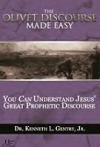

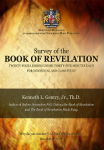
September 26, 2023
THE GREAT OMISSION
PMW 2023-075 by Benjamin Sherrill
Idahoan Pastor Toby J. Sumpter recently tweeted what he deems is the newly edited version of the Great Commission for modern evangelicals:
“A moderate amount of power has been given to Me — mostly in Heaven and a little on earth, therefore try your best to make disciples, maybe a few from every nation? — baptize them and teach them only your favorite parts of the New Testament.”
The quote makes some chuckle, but to a large part of the evangelical world it is a sad, but true reality: Welcome to the great omission! In 2018 Barna Group [1], a Christian research organization, released the results of a study conducted on pastors, churchgoers, and U.S. adults which demonstrated that 51% of those surveyed did not know what the Great Commission was! If 51% of the surveyors had never even heard of the Great Commission (this included pastors mind you), I wonder out of those who have heard of the Great Commission, how many actually understand and are actively obeying this great command?
The survey and quote demonstrate a catastrophic failure of the Church to understand what she is for and why on Earth (literally) are we here. It’s like we have embarked upon a ship not knowing where we are going, why we are getting on a ship, or what the purpose of the trip is. I once heard Pastor Jeff Durbin say that “culture is the report card of the Church” and if that’s the case we are failing tremendously. The Church’s disobedience to know, comprehend, and obey the Great Commission is the direct result of the darkness and sin encroaching upon the bride of Christ. Think about it, God’s solution to save, redeem, and restore the world from its cursed state (Gen. 3:15), is the Great Commission implemented and obeyed. It is not plan A or B or C, it is THE plan and for too long we have engaged in the great omission. It’s time for the bride of Christ to repent of her disobedience and be awakened to the inheritance that already belongs to her (Ps. 2:7-8), purchased by Christ’s blood-bought payment for the world (Matt. 28:18-20;Jn. 3:16-17; 19:30).
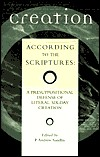 Creation according to the Scriptures
Creation according to the Scriptures
Ed. by P. Andrew Sandlin
This book is sub-titled: A Presuppositional Defense of Literal , Six-day Creation. It has chapters by R. J. Rushdoony, Andrew Sandlin, Kenneth Gentry, Cornelius Van Til, and others. It touches on historical, exegetical, theological, and philosophical implications of Six-day Creation.
See more study materials at: www.KennethGentry.com
Let us compare and contrast Pastor Sumpter’s satirical formulation of the Great Commission with the actual passage from Matthew 28:18-20. First he says: “A moderate amount of power has been given to Me — mostly in Heaven and a little on earth”. Now it’s probable that most Christians would not actually profess this with their mouths, yet we do confess it by the way we live. The misconception comes when trying to understand the idea of Christ’s Lordship. Scripture says:
“All authority in heaven and on earth has been given to me.” Jesus having all authority in heaven and on earth often means to Christians that He is supreme Lord in the heavenlies, in some other dimension way-out “there”. He is Lord over all of the angels, over all of the deceased saints that are now in heaven, or Lord over the Church, but when it comes to His full authority, kingship, power, and sovereignty over all his earthly creation, we have a hard time not limiting His authority because we are under the guise that “this world is not our home”, we’re just “passing through” and that the earthly world actually belongs to Satan. Yet Jesus is saying the exact opposite! At his ascension, Jesus was attending his coronation session. The Father gave Him all authority and made a regal pronouncement to the world, to every individual, every family, every city, every nation, every president, every political authority, every business, every educational system, that everything must be submitted under the Lordship of Christ because He has been crowned as King over all kings and Lord over all lords (Rev. 1:5). Universal dominion belongs to Christ (Ps. 2, 72; Matt. 28:18-20; Eph. 1:18-22; Col. 1:15-20). This scene is the capstone moment of God’s great story of covenantal and redemptive work throughout the world. Therefore, Christians are commanded to press the Crown rights of King Jesus in every area of life and thought. Hallelujah, truly “all authority” has (past-tense) been given to the King.
Pastor Sumpter continues, “Therefore try your best to make disciples, maybe a few from every nation?”. While Jesus’ words, in contrast are, “Go therefore and make disciples of all nations”.
“Therefore try” sounds like a suggestion or a gentle-lighthearted invitation, similar to Rick Warren’s statement on national news to “just give Jesus a 60-day trial”. “Therefore try” is the modern-day mantra for kids sports: “hey kids it doesn’t matter if you win or lose, just go out there give it a try, have fun, and remember it’s all about participation”. But is the Great Commission merely a suggestion? Is the Church truly out for a participation trophy? I don’t think so. Our Lord has not invited us to go out there and try to participate.We can’t just stay home and play monopoly if we come to find the call is too difficult. Jesus is the cosmic King of the universe and he has commanded His Church to engage in a military operation that results in world conquest; “Go therefore and make disciples of all nations”. Could you imagine the great hymn “Onward, Christian Soldiers” sung to the tune of the modern church, “Onward, Christian Voluntary-Participants” Consider what three pioneer missionaries said concerning the obligation of the Great Commission:
“Is not the commission of our Lord still binding upon us? Can we not do more than now we are doing?” -William Carey
“The Great Commission is not an option to be considered; it is a command to be obeyed.” – Hudson Taylor
“If a commission by an earthly king is considered an honor, how can a commission by a Heavenly King be considered a sacrifice?” – David Livingstone
A misconception that I would add to Pastor Toby’s phrase here would be the following: “Therefore try and make [converts].” This is not what the Great Commission commands. Jesus is clear that to “make disciples” is the target at hand. On the contrary, many Christians take “make disciples” to mean simply evangelism or involvement with social programs (feeding the poor, painting orphanages, digging wells, etc.). The great founder of Methodism, John Wesley once said “The church changes the world not by making converts but by making disciples.” The discipleship process begins by recognizing the absolute necessity of the new birth, Jesus said in John 3:7, “You must be born again!”. There is no way around this reality. God could care less if you’ve fed a million orphans if you are still in your sins. Making the world a better place for people to go to hell from is not the goal.
Three Views on the Millennium and Beyond
(ed. by Darrell Bock)
Presents three views on the millennium: progressive dispensationalist, amillennialist, and reconstructionist postmillennialist viewpoints. Includes separate responses to each view. Ken Gentry provides the postmillennial contribution.
See more study materials at: www.KennethGentry.com
That being said, the new birth is only the first step to the process. It is the front door to the house, hence, to be a disciple of Jesus does not mean to just get saved so I can go to heaven one day. The Greek word for disciple is one who is a pupil. The disciple is one who is engaged in the life-long process of hearing and obeying every word from his Lord (Matt. 4:4; 5:17; Lk. 11:28; Jas. 1:22-25). A disciple is one that actively seeks to submit his mind, body, and soul, and everything in him under the Lordship of Jesus (1 Cor. 9:24-27; 2 Cor. 10:5). Principally a disciple of Jesus Christ is one who is born again, therefore subjecting himself to the authority of Scripture, which leads to hearing and obeying, and resulting in a Christian producing a lot of righteous-holy-love-filled fruit (Jn. 13:35; 15:8).
Pastor Sumpter continues, “maybe a few from every nation?” in contrast to Scripture which states “from all nations”. As previously mentioned Jesus says that because he is the owner of absolutely everything, we are commanded, on that basis, to make all nations Christ’s disciples. Therefore, a Christianized world is the goal. This good creation, that God made, is not going to hell in a hand-basket. God’s intention is not to pluck a few branches here and there from the fire. Rather, it is God’s creational-purpose to redeem the whole cosmos (Gen. 1:26-31), “For God did not send his Son into the world to condemn the world, but in order that the world might be saved through him.” (Jn. 3:17). This is consistent with God’s covenantal nature. Consider one of the hundreds of promises, this one given to the father of faith Abraham, “… in you all the families of the earth shall be blessed.” (Gen. 12:3; Rom. 4:13). The Great Commission entails all nations be Christ’s disciples, not just a few people here and there.
Pastor Sumpter’s last section says, “… baptize them and teach them only your favorite parts of the New Testament.”, but the passage actually says, “baptizing them in the name of the Father and of the Son and of the Holy Spirit, teaching them to observe all that I have commanded you.”
This type of thinking, “teach them only your favorite parts of the New Testament”, is not specific to modern evangelicals. In ancient times, one of the first heresies the Church fought off was called Marcionism. Marcion pushed a dichotomized theology that said, the God of the New Testament is radically distinct from the God of the Old Testament. Fast forward to the 19th century, we see the inception of a non-heretical and less radical view of this, yet still extraordinarily damaging to the Church, by the name of Dispensationalism [2] . This system’s most distinguishing facet is its strong separation between ethnic/national Israel and the Church. It makes them two separate entities[3] , which ought to produce for the Christian, a very antagonistic view of the law of God (particularly in the Old Testament).
A dispensational framework leads many Christians today to think that the Church began in the New Testament and that she stands only on the shoulders of Jesus and the Apostles. But what were Jesus and the Apostles then standing on? What was their foundation? What Scriptures were they reading and obeying? Does the story of Scripture scrap everything before Matthew 1? Is most of the Bible (Old Testament) to be disconnected or “unhitched”[4] from 21st century Christianity? That is how many have taught the relationship between the Old and New Covenants and I am here to plead, please stop! This is blasphemous and a slander to the character and nature of the Triune God of Scripture.
Yahweh, from Genesis to Revelation does not have two stories, two peoples, two plans of redemption, or two ethical standards (law & gospel). This is a man-made dichotomy. The Bible is one story of redemption connected by the thread of covenants gradually building upon each other through the conquest of the Old and New Covenant Church, the Israel of God (Jer. 31:31-34; Gal. 3:16;6:16; Heb. 8:8-12). The law of God is gracious, merciful, holy, and good (Rom. 7:12), it was not created to save anyone (Rom. 10:1-4), but to be established by faith (Rom. 3:31), hence bringing righteousness amongst God’s covenant people so that the nations of the earth would know that Yahweh is the Lord (Deut. 4, 6). Christians must not pit the law versus gospel, old versus new, Israel versus Church. These strange dichotomies arise precisely when we stop reading both testaments with equal importance, one is not more inspired than the other.
Therefore, as Christians seek to make whole-Bible disciples instead of New Testament converts. We must remember that Jesus commanded to teach them (the nations) to obey all that He has commanded (Matt. 5:17-20; 28:18-20; 2 Tim. 16-17; Rom. 15:4). To relegate the Great Commission to certain parts of the New Testament is to butcher the entire point of the passage. The Great Commission is the climactic point of the longstanding covenantal program of God to respond to sin and it is the fruition of the development of the history of redemption that is continuous with the Old Testament. Thus, understanding the Great Commission properly is absolutely essential to comprehending what the Church is for and why on Earth we are here, because the Great Commission is the mission of God.
_____________________________________________
NOTES
1 https://www.barna.com/research/half-churchgoers-not-heard-great-commission/
2 I am not saying that a Christian who holds this position is the equivalent of being a heretic or a Marcionite, however, it is inevitable to see the many similar traits both systems agree upon.
3 Charles Ryrie, J. Dwight Pentecost, John Walvoord, and other leading Dispensational theologians state this very clearly.
4 In 2018, famous Atlanta-based Pastor Andy Stanley told his congregation that they need to unhitch themselves from the Old Testament.
GENTRY NOTE:
This article was taken from the One More International website: https://www.onemoreinternational.org/post/the-great-omission
This is a ministry dedicated to “making disciples,” focusing on those in the Hispano-American regions; Mexico through Argentina, the Caribbean, and wherever Spanish-speakers are making disciples. Benjamin Sherrill was born and raised in San Jose, Costa Rica, to missionary parents. After graduating high school, he moved to the States to attend Oral Roberts University, where he got an undergraduate degree in Business Marketing. He finished his Masters of Divinity and Masters in Theological Studies from Midwestern Baptist Theological Seminary. He works with One More International, helping with communications and relations here in the US as well as aid in teaching in their international Bible schools.
Click on the following images for more information on these studies:
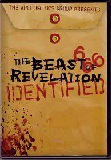

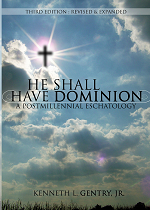
September 22, 2023
THE GREAT TRIBULATION vs. THE POSTMILLENNIAL HOPE? (7)
 PMW 2023-074 by Kenneth L. Gentry, Jr.
PMW 2023-074 by Kenneth L. Gentry, Jr.
This is my final installment in this series on the great tribulation as understood within postmillennialism. We come now to a few more difficult texts.
Christ’s coming
In Matthew 24:27 Jesus states: “For just as the lightning comes from the east, and flashes even to the west, so shall the coming of the Son of Man be.” This is the sort of language we expect regarding the second coming of Christ, when he comes publicly and gloriously to conclude world history. Did Christ come like lightning in AD 70: How can this sort of language apply to AD 70?
We must understand this declaration in terms of the context. The Lord had just cautioned his disciples: “If therefore they say to you, ‘Behold, He is in the wilderness,’ do not go forth, or, ‘Behold, He is in the inner rooms,’ do not believe them” (Matt 24:26). We must recall Josephus’ report in Jewish Wars 2:13:5 [261–62] cited above that records an episode in which an Egyptian false prophet arose in the wilderness claiming a great deliverance.
Jesus dismisses such by stating that when he physically comes again to the earth, it will be an unmistakable event: “For just as the lightning comes from the east, and flashes even to the west, so shall the coming of the Son of Man be” (Matt 24:27). The “for” (gar) here shows that he is giving the reason why his disciples should not think he is off in some wilderness or in an inner room somewhere. When he does return in his second coming, it will be as visible and dramatic as a lightning flashing.
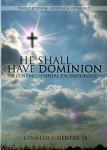
He Shall Have Dominion
(paperback by Kenneth Gentry)
A classic, thorough explanation and defense of postmillennialism (600+ pages). Complete with several chapters answering specific objections.
See more study materials at: www.KennethGentry.com
So again, we see how the prophecies of Matthew 24 find fulfillment in the first century. In that these prophecies are for that era (Matt 24:34), why should we opt for a futurist approach to the matter?
The stars will fall
As the Lord continues in detailing the dramatic events, he states in Matthew 24:29: “But immediately after the tribulation of those days the sun will be darkened, and the moon will not give its light, and the stars will fall from the sky, and the powers of the heavens will be shaken.” This sounds like the universe is collapsing. Did such literally occur in AD 70?
Once again we are facing apocalyptic, hyperbolic language. Consider Isaiah 13:10–13 which as instructive for this point:
“For the stars of heaven and their constellations will not flash forth their light; the sun will be dark when it rises, and the moon will not shed its light. Thus I will punish the world for its evil, and the wicked for their iniquity; I will also put an end to the arrogance of the proud, and abase the haughtiness of the ruthless. I will make mortal man scarcer than pure gold, and mankind than the gold of Ophir. Therefore I shall make the heavens tremble, and the earth will be shaken from its place at the fury of the Lord of hosts in the day of His burning anger.”
Despite the initial appearance, Isaiah is not referring to the end of history. In the context he clearly identifies historical, Old Testament Babylon as the object of this judgment: “The oracle concerning Babylon which Isaiah the son of Amoz saw” (Isa 13:1). In verse 17 he also mentions the Medes as an element of God’s judgment against them: “Behold, I am going to stir up the Medes against them.” Not only are the Medes an Old Testament era people who no longer exist, but they would be meaningless if the preceding language speaks of some sort of cosmic catastrophe. Indeed, they themselves would fall under such catastrophic events.
This prophecy refers to Old Testament Babylon’s overthrow, with the Median invasion securing that overthrow. The God of the universe is acting by his providential superintendence; metaphorically he is darkening the light of heaven on this might nation. The same imagery applies to the collapse of Jerusalem in AD 70 — which will occur “in this generation” (Matt 24:34) as the temple is destroyed (Matt 24:2).
Coming on the clouds
In Matthew 24:30 the Lord makes a remarkable statement. Unfortunately, the NASB, which I have been using throughout this series, is poorly translated here. So we will cite both the King James Version and the English Standard Version to better capture the meaning of the text.
In this verse we read a statement that sounds very much like the second coming of Christ. The KJV reads: “Then shall appear the sign of the Son of man in heaven: and then shall all the tribes of the earth mourn, and they shall see the Son of man coming in the clouds of heaven with power and great glory.” The ESV reads: “Then will appear in heaven the sign of the Son of Man, and then all the tribes of the earth will mourn, and they will see the Son of Man coming on the clouds of heaven with power and great glory.” Did Christ come on the clouds in AD 70?
Tongues-speaking: Meaning, Purpose, and Cessation
 by Ken Gentry
by Ken Gentry
The position presented within is that tongues-speaking allowed the gift person to speak in a known human language without previously knowing it; tongues brought inspired revelation from God; the gift was a sign confirming the apostolic witness and warning of the coming destruction of Jerusalem; and therefore the gift ceased in the first century.
See more study materials at: www.KennethGentry.com
This language certainly could be used of the second advent. But once again, just three verses later Jesus states very clearly and forcefully: “Truly, I say to you, this generation will not pass away until all these things take place” (Matt 24:34). Thus, we must recognize this as referring to the AD 70 event. A similarity of language between AD 70 and the second advent should not surprise us. After all, AD 70 is a distant reflection of that future, literal coming. Therefore the same dramatic language can apply to it, as well.
According to Jesus’ prophecy there will be a “sign of the Son of Man in heaven.” He is speaking of some sort of sign that he is at the right hand of God rather than in the cold hard ground. They will learn by some judgment sign that he is high and exalted, the one causing their judgment and anguish. This sign is (apparently) the smoke of the temple being destroyed. This will be the sign to the Jews that the Son of Man is no longer dead but in heaven at God’s throne, where he will moves against them in judgment. He warned the Jews that this would happen (Matt 26:64). After all, he promised his disciples: “Truly I say to you, there are some of those who are standing here who will not taste death until they see the kingdom of God after it has come with power” (Mark 9:1).
Gathering the elect
Another confusing feature of Christ’s prophecy is found in Matthew 24:31: “And He will send forth His angels with a great trumpet and they will gather together His elect from the four winds, from one end of the sky to the other.” Is this speaking of the rapture? Did it occur in AD 70? Whatever this verse means, we must recall once again that Jesus affirms only three verses later that “all these things” will take place in “this generation” (Matt 24:34).
Actually it is important to understand that the word “angel” (Gk.: aggelos) can be (and often is) translated: “messenger.” In Scripture it frequently refers to human messengers. We find this usage in Matthew 11:10; Mark 1:10; Luke 7:24 and 27. For instance, Jesus cites Malachi 3:1 as referring to John the Baptist: “This is the one about whom it is written, ‘Behold, I send my messenger [aggelos] ahead of you, who will prepare your way before you’” (Matt 11:10).
Here Jesus is speaking of sending forth his messengers to trumpet the gospel of salvation. The collapse of the old covenant economy in the destruction of the temple is the sign that the gospel of God’s saving grace is spreading to all the world. The messengers are overflowing the boundaries of Old Testament Israel (cp. Psa 147:19–20; Amos 3:2; Eph 2:11–12). God is finished with sacrifices and human priests (Heb 8:13); he will no longer confine his grace to a single nation (John 4:20–24). Now the gospel will go to all nations (Matt 28:18–20).
When the messengers go forth and declare the gospel, they go “from one end of the sky to the other,” which means from one horizon (where the sky “touches” the ground) to the other, that is, in all directions (cp. Deut 4:32). They call people and gather them into a new body, the new covenant church of Christ. In fact, this “gathering” language appears in a very significant passage in Hebrews 10:25, where the Jews are commanded to “gather together” as Christians, and not to fall back into Judaism: “Not forsaking our own assembling together, as is the habit of some, but encouraging one another; and all the more, as you see the day drawing near.”
Conclusion
As we have seen in this analysis of Jesus’ teaching on the great tribulation, a strong case can be made that the tribulation is already past in that the destruction of Jerusalem and the temple in AD 70 is that great tribulation. The great tribulation ends the old covenant economy and establishes the new covenant order. As the writer of Hebrews expresses it: “When He said, ‘A new covenant,’ He has made the first obsolete. But whatever is becoming obsolete and growing old is ready to disappear” (Heb 8:13).
Therefore, the great tribulation lies in our past, not in our future. Postmillennialism does have a place for the great tribulation — at the beginning of Christian history, not at the end. The postmillennial outlook is not undermined by Christ’s teaching on this time of terrible judgment.

For more information, see: https://www.cruciformministries.org/a-purchased-victory
September 19, 2023
THE GREAT TRIBULATION vs. THE POSTMILLENNIAL HOPE? (6)
 PMW 2023-073 by Kenneth L. Gentry, Jr.
PMW 2023-073 by Kenneth L. Gentry, Jr.
We are nearing the end of our series on the great tribulation in postmillennialism. if you endure to the end, you surely must be saved! Let us know consider the verse that directly mentions “the great tribulation.”
In Matthew 24:21 the Lord states that
“then there will be a great tribulation, such as has not occurred since the beginning of the world until now, nor ever shall.”
Was AD 70 the worst catastrophe ever? What about World Wars I and II? Surely they were much worse than the first-century Jewish War with Rome. How can we explain this statement of Jesus while maintaining our first-century interpretation?
Three Views on the Millennium and Beyond
(ed. by Darrell Bock)
Presents three views on the millennium: progressive dispensationalist, amillennialist, and reconstructionist postmillennialist viewpoints. Includes separate responses to each view. Ken Gentry provides the postmillennial contribution.
See more study materials at: www.KennethGentry.com
When we consider this in its biblical context, however, ample information supports my conclusion that A. D. 70 is in view. Note the following points.
First, Matthew 24:34 states that “all these things” shall occur in “this generation.” We must notice that verse 34 appears just thirteen verses after verse 21. Therefore, “the great tribulation” must be one of “these things” to occur in “this generation.”
Second, more catastrophic than our recent World Wars was Noah’s Flood. And it must even be worse than the supposed future great tribulation. For in Noah’s Flood the entire human population perished, except for one family (1 Pet 3:20; 2 Pet 2:5). And yet Jesus mentions Noah’s Flood in his context (Matt 24:37–39). So something else must be going on here.
Third, to interpret Jesus properly we must understand the use of hyperbole in Old Testament prophetic language. Very often we find that judgment language in prophecy is formulaic, stock-in-trade, highly stylized, poetic language. For instance, in Exodus 11:6 we read these words regarding the tenth plague on Egypt: “’Moreover, there shall be a great cry in all the land of Egypt, such as there has not been before and such as shall never be again.” Which is it? Is the great tribulation the worst judgment, as per Matthew 24:21? Or is the tenth plague upon Egypt the worst, as per Exodus 11:6?
In Ezekiel 5:9 we read of the Old Testament destruction of the temple by the Babylonians: “Because of all your abominations, I will do among you what I have not done, and the like of which I will never do again.” But in Matthew 24 it happens again. This is apocalyptic, poetic, dramatic imagery.
In fact, Josephus evaluates the Jewish War similarly to Christ:
“Whereas the war which the Jews made with the Romans has been the greatest of all those, not only that have been in our time, but, in a manner, of those that ever were hear of, both of those wherein cities have fought against cities, or nations against nations” (Jewish Wars, Preface 1 §1).
“The misfortunes of all men, from the beginning of the world, if they be compared to these of the Jews, are not considerable as they were” (Jewish Wars, Preface, 4 §12).
“Neither did any other city ever suffer such miseries. . . from the beginning of the world” (Jewish Wars 5:10:5 §442).
Have We Missed the Second Coming: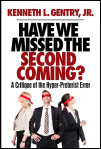
A Critique of the Hyper-preterist Error
by Ken Gentry
This book offers a brief introduction, summary, and critique of Hyper-preterism. Don’t let your church and Christian friends be blindfolded to this new error. To be forewarned is to be forearmed.
For more Christian educational materials: www.KennethGentry.com
Such comparative language is even used in more mundane, less dramatic circumstances in Scripture. Consider the sterling, high praise of both Hezekiah and Josiah — from the same book! Both are declared to be the best ever:
2 Kings 18:5 (regarding Hezekiah):
“He trusted in the LORD, the God of Israel; so that after him there was none like him among all the kings of Judah, nor among those who were before him.”
2 Kings 23:25 (regarding Josiah):
“Before him there was no king like him who turned to the LORD with all his heart and with all his soul and with all his might, according to all the law of Moses; nor did any like him arise after him.”
We even tend to use language in a similar, boldly exaggerated manner. This is like our saying to our child: “Haven’t I told you a million times not to do this?” Or: “I have a ton of work to do.” Or: “This will take me forever to straighten out.”
Thus, Jesus’ declaration in verse 21 is dramatic speech emphasizing the remarkable nature of this event. It is not meant to be literally understood.
Just one more article to go! Please join me next time.

For more information, see: https://www.cruciformministries.org/a-purchased-victory
September 15, 2023
THE GREAT TRIBULATION vs. THE POSTMILLENNIAL HOPE? (5)
 PMW 2023-072 by Kenneth L. Gentry, Jr.
PMW 2023-072 by Kenneth L. Gentry, Jr.
As I offer my fifth contribution in this series on the role of the great tribulation in postmillennialism, we come now to consider several interpretive difficulties. At least, verses that seem difficult to apply in the first century.
Jesus expressly states that all these things shall occur in “this generation” (Matt 24:34). Regardless of how difficult a first-century fulfillment may seem for some of Jesus’ statements, his clear time frame statement control our interpretation of the passage. Let us consider the troublesome issues that arise in the remaining prophecies.
Gospel proclamation
Many opponents of the first-century analysis point first of all to Jesus’ statement regarding the preaching of the gospel: “And this gospel of the kingdom shall be preached in the whole world for a witness to all the nations, and then the end shall come” (Matt 24:14). How can we explain this statement? The “whole world” heard the gospel? This looks like a formidable objection against a first-century fulfillment. But looks are deceiving.
Actually, the meaning of the Greek word oikumene (“world”) here does not necessarily refer to the entire planet. We may glean many examples of a more restricted meaning from various Scriptures. For instance, in Acts 24:5 Luke records the Jewish opposition against Paul in that they charge him with causing dissension among the Jews “throughout the whole world.” Surely this means their world, the world of their experience, the Roman empire.
But even more significantly the New Testament informs us that the gospel is preached throughout the entire known world of that day: “First, I thank my God through Jesus Christ for you all, because your faith is being proclaimed throughout the whole world” (Rom 1:8). Paul even writes that “the gospel . . . has come to you, just as in all the world” (Col 1:6, cp. v 23). Interestingly, in this statement he uses the word kosmos which can and often does speak of the entire world. Yet he declares that the gospel has come “in all the world.”
Thus, in the Matthew 24:14 Jesus simply states that the gospel will be preached in the entire known world of that day before these events reach their climax. That is, it will not be limited to Israel, as was his ministry (Matt 10:6; 15:24).
Abomination of desolation
What are we to make of his statement regarding the dreaded “abomination of desolation?” In Matthew 24:15 the Lord states: “Therefore when you see the abomination of desolation which was spoken of through Daniel the prophet, standing in the holy place.” This prophecy is often associated with a world-ruling Antichrist in the future.
Four Views on the Book of Revelation
(ed. by Marvin Pate)
Helpful presentation of four approaches to Revelation. Ken Gentry writes the chapter on the preterist approach to Revelation, which provides a 50 page survey of Revelation .
See more study materials at: www.KennethGentry.com
Contrary to popular opinion, though, this must also occur in the first century. We see this from the following evidence: (1) This “abomination” stands in the “holy place,” i.e., the temple standing immediately before them (cp. Matt 23:38—24:2). (2) His audience could imagine no other locality, for Jerusalem is the “holy city” (Neh 11:1, 18; Isa 48:2; 52:1; Dan 9:24; Matt 4:5; 27:53) (3) Christ is responding to questions pertaining to that very temple (cf. Matt 24:1). He even points to the temple as he answers (Matt 24:2). That holy place will be dismantled by the Roman soldiers within forty years, a generation.
The “abomination of desolation” is the destruction of Jerusalem and the temple by pagan Roman armies. Luke’s parallel account makes this clear. He takes Matthew’s Hebraic language and interprets it for his Gentile audience: “But when you see Jerusalem surrounded by armies, then recognize that her desolation is at hand” (Luke 21:20). He tells us what the abomination is: Jerusalem being surrounded by Roman armies for the purpose of decimating her temple.
The Romans encircle Jerusalem on at least two occasions: under Vespasian in the initial siege and later under Titus not long before the Temple’s final destruction. Of Vespasian’s siege Josephus comments:
“And now the war having gone through all the mountainous country, and all the plain country also, those that were at Jerusalem were deprived of the liberty of going out of the city; for as to such as had a mind to desert, they were watched by the zealots; and as to such as were not yet on the side of the Romans, their army kept them in, by encompassing the city round about on all sides.” (Jewish War 4:9:1 §490)
He writes that later Titus builds “a wall round about the whole city” (Jewish War 5:12:1 §499).
After the first surrounding, the Christians are to flee from Judea. In God’s providence, Vespasian withdraws from the siege when Nero dies; the Christians then had the opportunity to escape. The early church father Eusebius notes that:
“The people of the church in Jerusalem had been commanded by a revelation, vouchsafed to approved men there before the war, to leave the city and to dwell in a certain town of Perea called Pella. And when those that believed in Christ had come thither from Jerusalem, then, as if the royal city of the Jews and the whole land of Judea were entirely destitute of holy men, the judgment of God at length overtook those who had committed such outrages against Christ and his apostles, and totally destroyed that generation of impious men.” (Ecclesiastical History 3:5:3; cp. Matt 24:16; Epiphanius, Of Weights and Measures, 15)
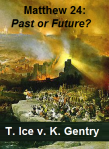 Great Tribulation: Past or Future?
Great Tribulation: Past or Future?
(Thomas Ice v. Ken Gentry)
Debate book on the nature and timing of the great tribulation. Both sides thoroughly cover the evidence they deem necessary, then interact with each other.
See more study materials at: www.KennethGentry.com
When the Roman soldiers finally obtain the upper hand in the temple, Josephus records how they raise their ensigns in the temple, bow to their to pagan deity, and offer incense to Caesar:
“The Romans upon the flight of the seditious into the city, and upon the burning of the holy house itself, and of all the buildings lying round about it, brought their ensigns to the Temple, and set them over against its eastern gate; and there did they offer sacrifices to them, and there did they make Titus imperator, with the greatest acclamations of joy.” (Jewish War 6:6:1 §316)
Thus, we see what the Lord means by “the abomination of desolation.” We are now ready to focus on the direct statement mentioning “the great tribulation.” But I am weary. So I will offer that study next time!

For more information see: https://www.cruciformministries.org/a-purchased-victory
September 12, 2023
THE GREAT TRIBULATION vs. THE POSTMILLENNIAL HOPE? (4)
 PMW 2023-071 by Kenneth L. Gentry, Jr.
PMW 2023-071 by Kenneth L. Gentry, Jr.
This is our fourth installment on the great tribulation in postmillennial eschatology. We are currently surveying Matthew 24 and its prepartory signs to the great tribulation, showing that these signs occurred historically in the first century.
We come now to Matthew 24:7b where he declares that “in various places there will be famines.” Famines are easy to document in biblical world of the first century where they were particularly devastating. For instance, in Acts 11:28 we read of Agabus’ prophecy of a “great famine” that occurs during the reign of Claudius (AD 50s): “There stood up one of them named Agabus and signified by the Spirit that there should be great famine throughout all the world: which came to pass in the days of Claudius Caesar.” This is probably the famine Josephus mentions as striking Jerusalem: “A famine did oppress them at that time, and many people died for want of what was necessary to procure food withal” (Antiquities 20:2:5 §51).
Classical writers testify to the widespread, recurring famines in the AD 50s and into the 60s. We discover these in the works of Suetonius, Dio Cassius, Eusebius, and Orosius. For instance, speaking of Rome in AD 51 Tacitus writes: “This year witnessed many prodigies . . . . Further portents were seen in a shortage of corn, resulting in famine. . . . It was established that there was no more than fifteen days’ supply of food in the city.” (Annals 12:43)
As noted above Josephus speaks of the famine in Jerusalem (Antiquities 20:2:5) which he later calls “the great famine” (Antiquities 20:5:2 §101). He mentions others (Antiquities 20:5:2 §101; Jewish War 3:7:11 §180; 4:1:9 §62; 6:3:3).
Matthew 24:7c adds: “in various places there will be famines and earthquakes.” A particularly dreadful quake shakes Jerusalem in AD 67. Josephus records this frightful catastrophe: “There broke out a prodigious storm in the night, with the utmost violence, and very strong winds, with the largest showers of rain, and continual lightnings, terrible thunderings, and amazing concussions and bellowings of the earth, that was in an earthquake” (Jewish War 4:4:5 §286).

Olivet Discourse Made Easy (by Ken Gentry)
Verse-by-verse analysis of Christ’s teaching on Jerusalem’s destruction in Matt 24. Shows the great tribulation is past, having occurred in AD 70, and is distinct from the Second Advent at the end of history.
See more study materials at: www.KennethGentry.com
Tacitus mentions earthquakes in Crete, Rome, Apamea, Phrygia, Campania, Laodicea (of Revelation fame) and Pompeii during the time just before Jerusalem’s destruction. Severe earthquakes plague the reigns of the Emperors Caligula (AD 37–41) and Claudius (AD 41–54). According to Seneca (ca. 4 BC—AD 65), others occur in Asia, Achaia, Syria, and Macedonia. Of this era, Ellicott’s commentary observes: “Perhaps no period in the world’s history has ever been so marked by these convulsions as that which intervenes between the Crucifixion and the destruction of Jerusalem.”
Persecution and apostasy
In Matthew 24:9 and 10 Jesus warns of persecution and apostasy:
“Then they will deliver you to tribulation, and will kill you, and you will be hated by all nations on account of My name. And at that time many will fall away and will deliver up one another and hate one
another.”
Almost every chapter of Acts details the persecutions the church endures in those early years: “And on that day a great persecution arose against the church in Jerusalem; and they were all scattered throughout the regions of Judea and Samaria, except the apostles” (Acts 8:1; cp. Acts 4:27; 16:20; 17:7; 18:12; 21:11; 24:1–9; 25:1–2).
[image error]For more information and to order click here.
Perilous Times: A Study in Eschatological Evil (by Ken Gentry)
Technical studies on Daniel’s Seventy Weeks, the great tribulation, Paul’s Man of Sin, and John’s Revelation.
See more study materials at: www.KennethGentry.com
Quite naturally a result of severe persecution is apostasy. John writes of apostasy in the first century: “They went out from us, but they were not of us; for if they had been of us, they would have continued with us; but they went out that they might be made manifest, that none of them were of us” (1 John 2:19; cp. 2 and 3 John). The Epistle to the Hebrews indicates a sizeable apostasy from among Jewish converts to Christianity (cf. Heb 2:1–4; 6:1–6; 10:26–31). Tacitus even alludes to apostasy during the Neronic persecution: “First, Nero had self-acknowledged Christians arrested. Then, on their information, large numbers of others were condemned” (Tacitus, Annals 15).
Conclusion
Thus, a quick survey of the biblical and the historical records show that many of the prophecies in Matthew 24 come to pass in the first century. This fits perfectly with the time-frame of Matthew 24:34 where our Lord asserts: “this generation shall not pass until all these things take place.” Therefore, we see that postmillennialism is not negatively impacted by the great tribulation passage — thus far.
But problems arise in other texts within Matthew 24. So next we must consider the difficulties facing this first-century interpretation. These seem to be quite a bit more difficult to apply to the first century, and are often used to counter the preterist analysis made thus far. So, see you next time!

For more information see: https://www.cruciformministries.org/a-purchased-victory
Kenneth L. Gentry Jr.'s Blog
- Kenneth L. Gentry Jr.'s profile
- 85 followers



